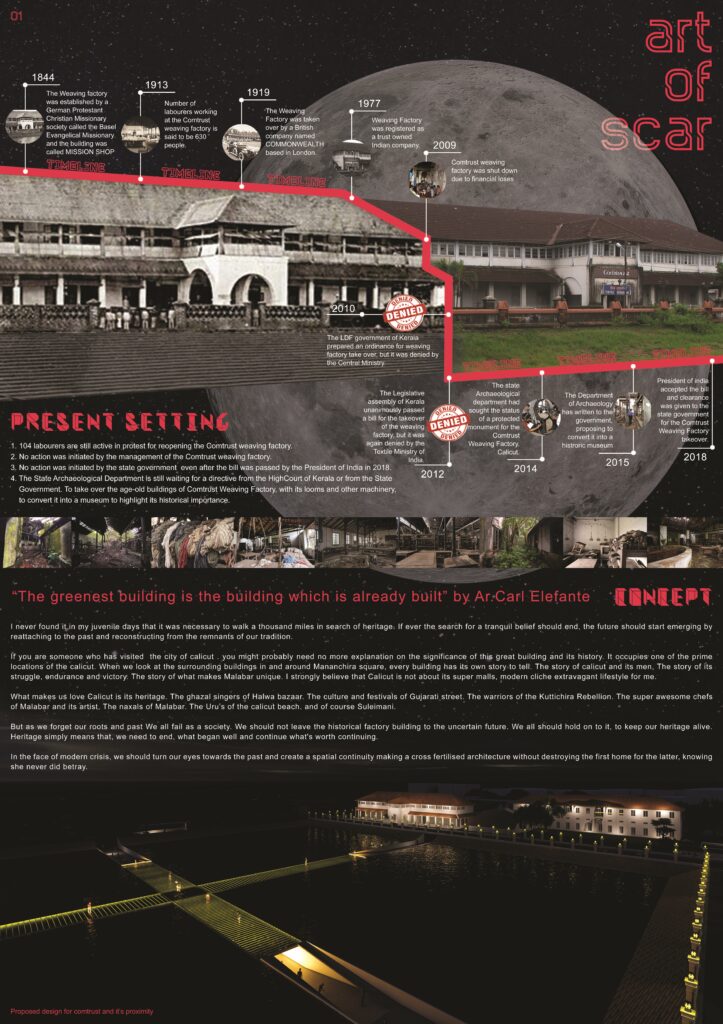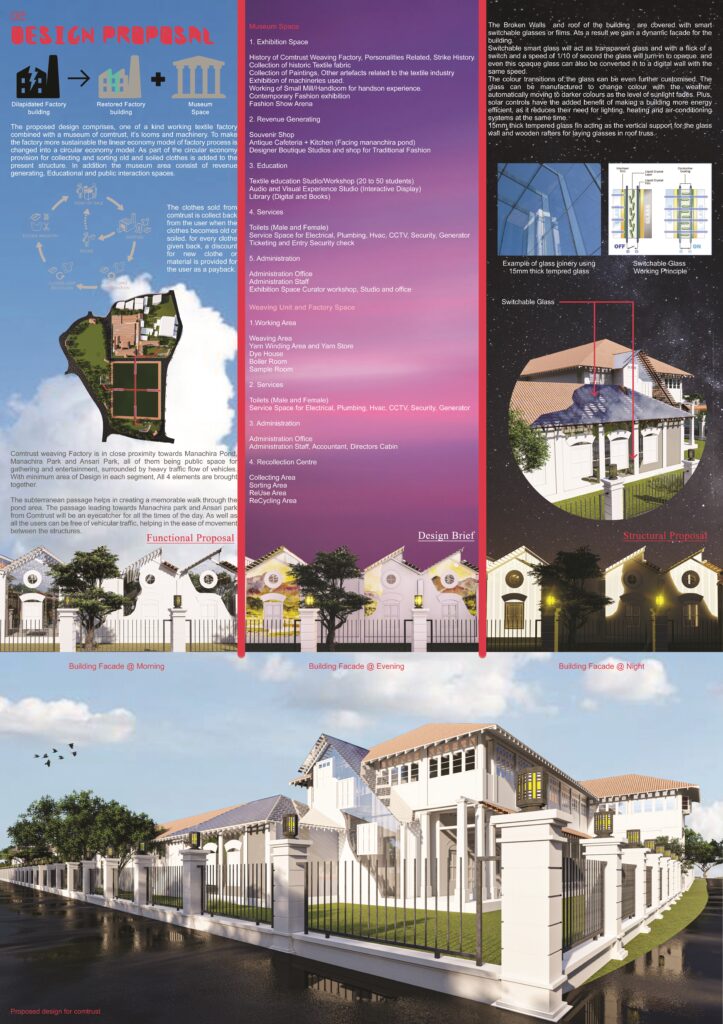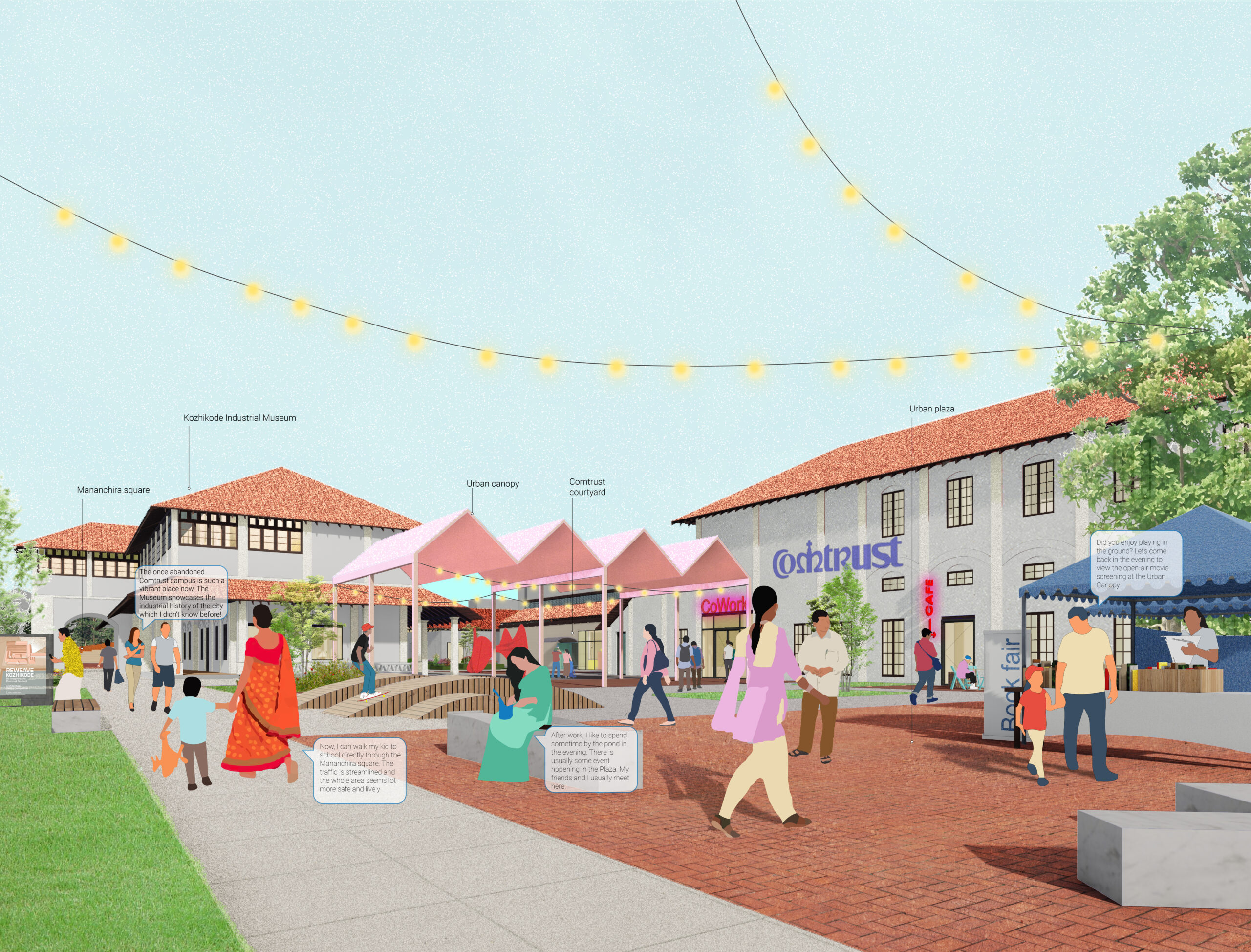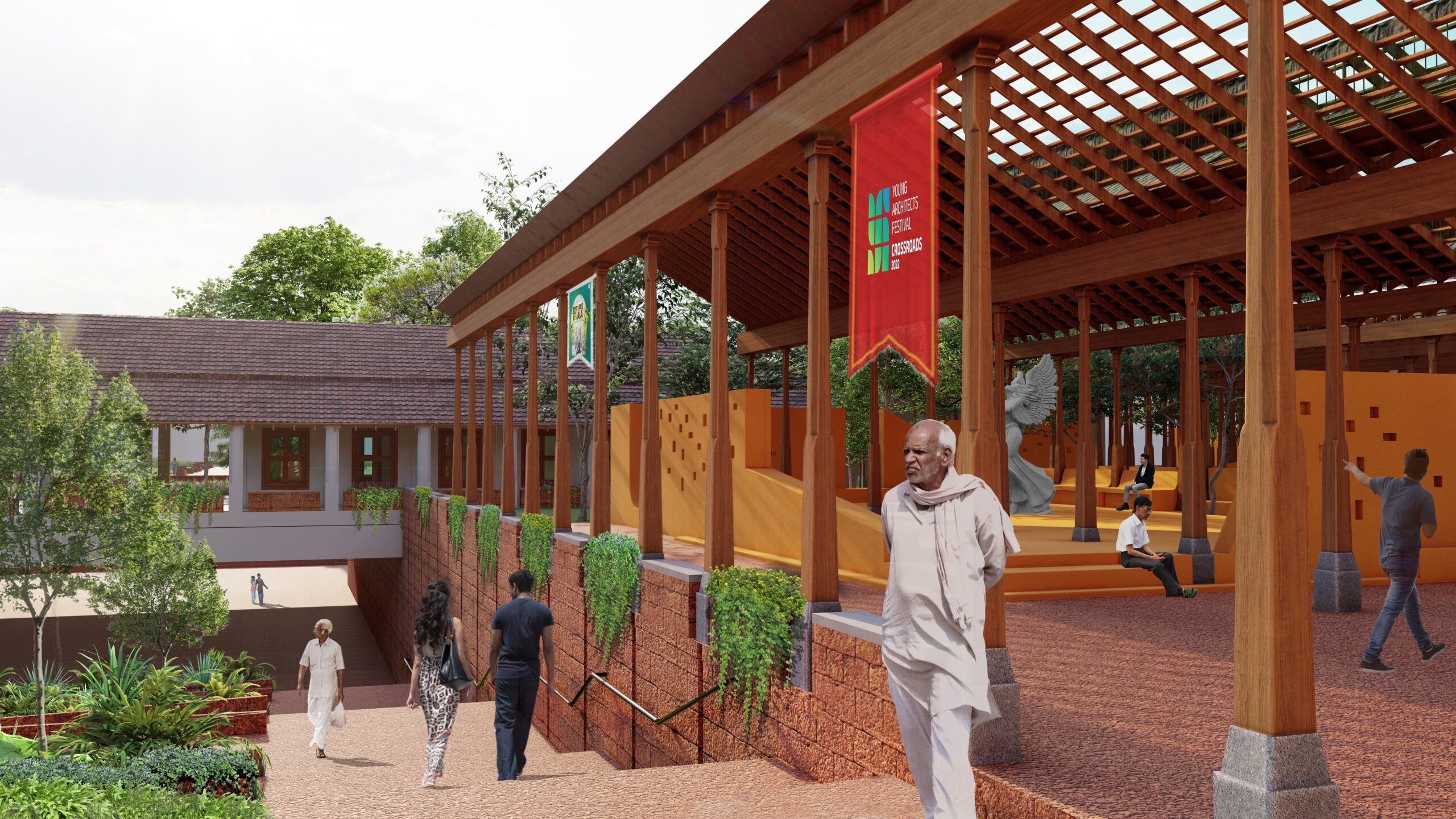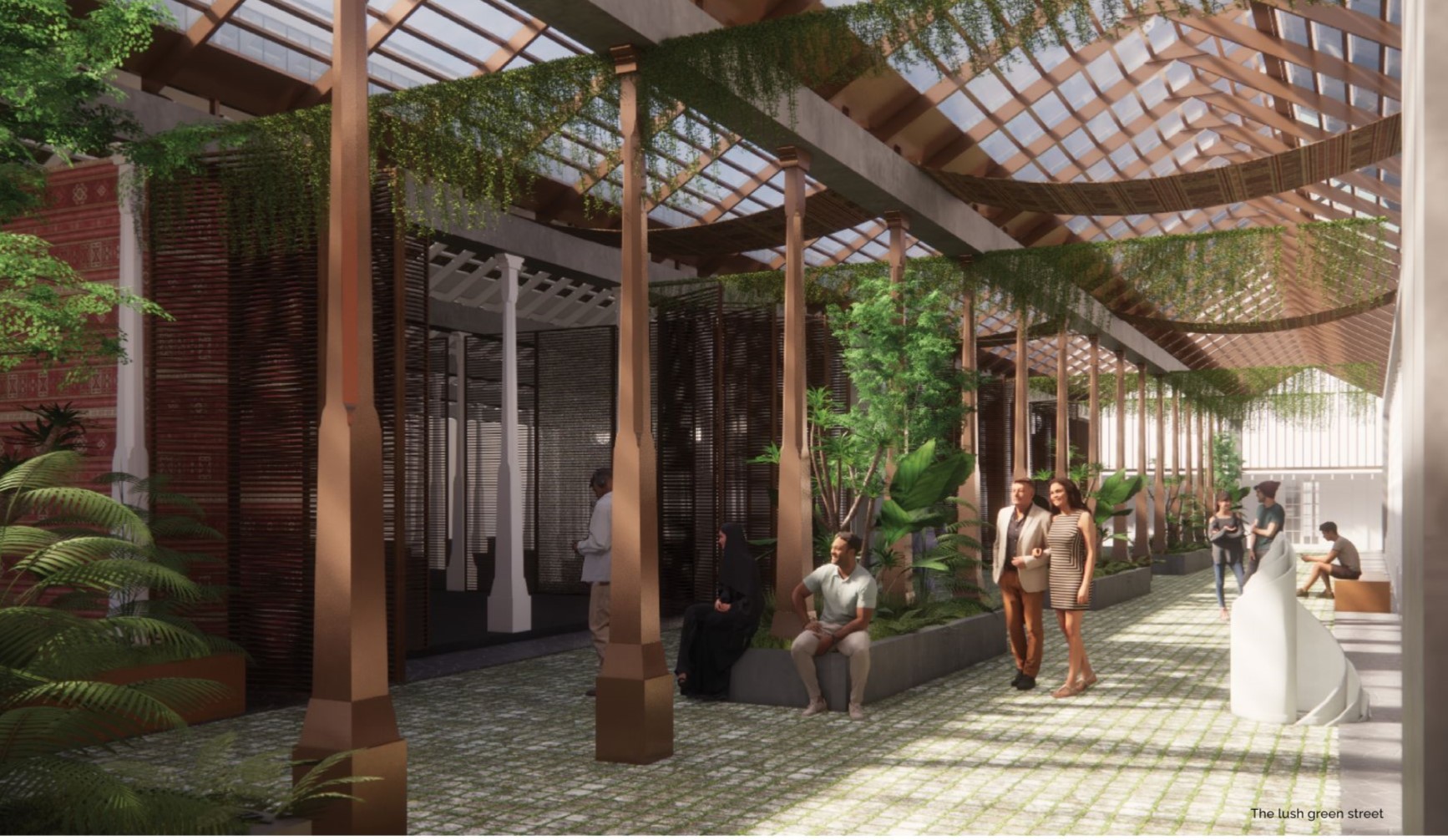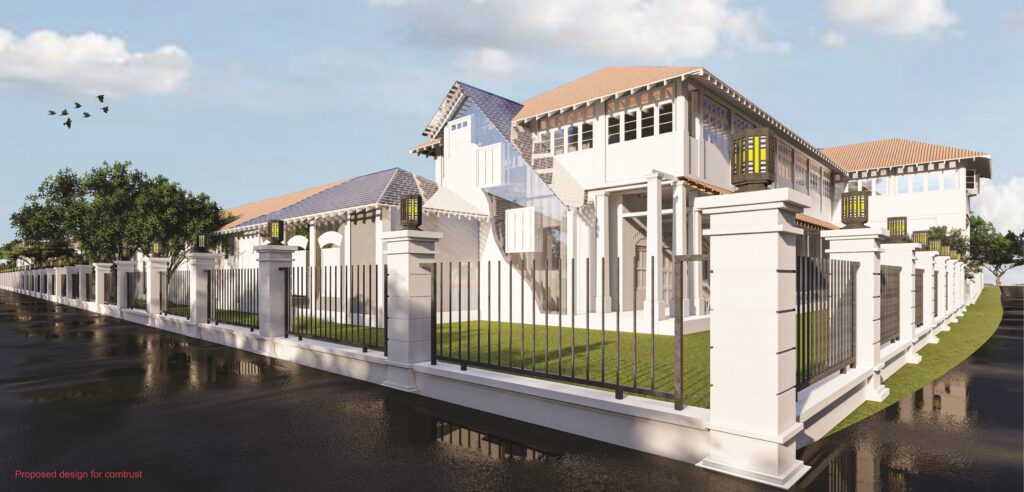
Bees Design LAB’s Art of Scar was shortlisted in the Reweave Kozhikode Competition, held at YAF, by the IIA Calicut Centre.
I never found it in my juvenile days that it was necessary to walk a thousand miles in search of heritage. If ever the search for a tranquil belief should end, the future should start emerging by reattaching to the past and reconstructing from the remnants of our tradition. If you are someone who has visited the city of Calicut, you might probably need no more explanation on the significance of this great building
and its history. It occupies one of the prime locations of Calicut. When we look at the surrounding buildings in and around Mananchira square, every building has its own story to tell. The story of Calicut and its men, the story of its struggle, endurance and victory, the story of what makes Malabar unique. I strongly believe that Calicut is not about its super malls, modern cliche extravagant lifestyle for me.
What makes us love Calicut is its heritage. The ghazal singers of halwa bazaar. The culture and festivals of Gujarati street. The warriors of the Kuttichira rebellion. The super awesome chefs of Malabar and its artist, The Naxals of Malabar. The uru’s of the Calicut beach and, of course, Suleimani. But, as we forget our roots and past, we all fail as a society. We should not leave the historical factory building to the uncertain future. We all should hold on to it, to keep our heritage alive. Heritage simply means that we need to end what began well and continue what’s worth continuing. In the face of modern crisis, we should turn our eyes towards the past and create a spatial continuity making a cross-fertilised architecture without
destroying the first home for the latter, knowing she never did betray.
The proposed design comprises, one of a kind working textile factory combined with a museum of comtrust, its looms and machinery. To make the factory more sustainable the linear economy model of the factory process is changed into a circular economy model. As part of the circular economy provision for collecting and sorting old and soiled clothes is added to the present structure. In addition, the museum area consists of revenue-generating, educational and public interaction spaces.
Comtrust weaving Factory is in close proximity towards Mananchira Pond, Mananchira Park and Ansari Park, all of them being public spaces for gathering and entertainment, surrounded by heavy traffic flow. With a minimum area of Design in each segment, All 4 elements are connected. The subterranean passage helps in creating a memorable walk through the pond area. The passage leading towards
the Mananchira park and Ansari park from comtrust will be an eyecatcher for all times of the day- the users can also be free of vehicular traffic, helping in the ease of movement between the structures.
The Broken Walls and roof of the building are covered with smart switchable glass or film. As a result, we gain a dynamic facade for the building. The need to preserve the Comtrust weaving Factory and prevent its further decay, while preserving the Looms and machinery on the inside of all perimeter walls and
authentic brick facade and maintaining the continuity of the original purpose of this building, is a challenge. The application of selected construction measures in accordance with conservation requirements, in order to improve the energy efficiency and comfort conditions of the building, enables an uninterrupted connection between cultural heritage and modern needs while maintaining the original purpose and authentic visual appearance of the building.
Presentation Sheets
